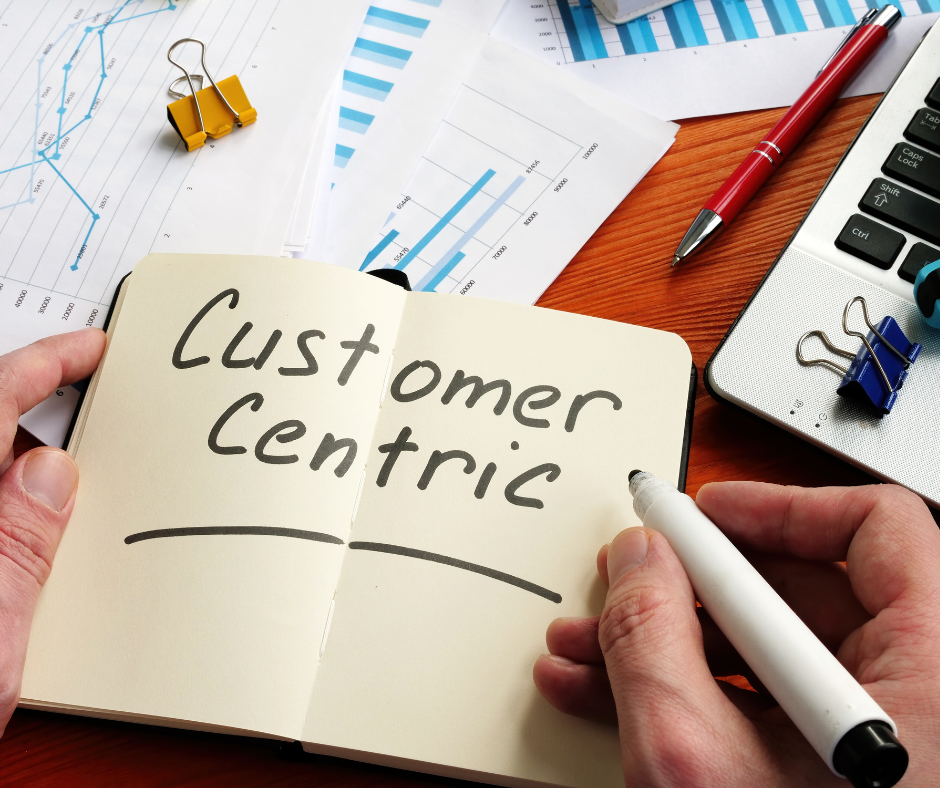How many subscription products or services do you use each day?
The likelihood is that the figure is higher than you think. Today, there is a subscription available for anything from coffee to cars. According to Gartner, 2023, 75% of companies that sell directly to customers will provide subscription services.
It seems obvious that the subscription business model will thrive.
In this article, everything you need to know about the subscription business model will be covered:
- What is a Subscription Business Model ?
- Why is the Subscription Business Model Sustainable?
- Advantages of the Subscription Business Model
- Popular Subscription Business Models
- How to Move to a Subscription Business Model?
- Essentials to Run a Successful Subscription Business
- Six Metrics All Subscription Business Should Track
- What kinds of businesses use a subscription revenue model?
- How Subscription Revenue differs from Regular Revenue
- Steps of the Subscription Revenue Cycle
- How Deskera Can Assist You?
- Key Takeaways
- Related Articles
What is a Subscription Business Model ?
A subscription business model is a type of business model where a customer pays a regular fee, typically on a monthly or annual basis, in exchange for access to a product or service. The customer is typically charged automatically, for example through a credit card, and can cancel their subscription at any time. Examples of companies that use a subscription business model include streaming services like Netflix and Spotify, as well as magazines and newspapers that offer digital subscriptions.
Why is the Subscription Business Model Sustainable?
The subscription business model can be sustainable for a number of reasons:
- Recurring revenue: Subscriptions provide a steady stream of recurring revenue for a business, which can help with forecasting and budgeting and make investing in growth and innovation easier.
- Customer retention: Subscriptions create a sense of commitment for the customer, making them more likely to stick with the service over time. This can lead to higher customer lifetime value and lower customer acquisition costs.
- Predictive Analytics: Subscription model allows businesses to predict the future revenue and adjust their business models accordingly.
- Upselling and cross-selling: Subscription businesses often clearly understand their customers' needs and preferences, which can be used to offer additional products or services.
- Cost-effective: Subscriptions can be more cost-effective for customers, as they can pay for access to a product or service over an extended period of time rather than a large upfront cost.
- Data-Driven: Subscription businesses can collect data on their customer and use it to improve their service and target marketing.
Overall, the subscription business model can be a sustainable way for companies to generate revenue, retain customers, and promote growth and innovation.
Advantages of the Subscription Business Model
The subscription business model can offer a number of advantages for companies, such as:
- Data-Driven: Subscription businesses can collect data on their customer and use it to improve their service and target marketing.
- Cost savings: The subscription business model can offer customer cost savings in the long run.
- Greater customer insights: It allows businesses to gain deeper insights into their customer's behavior and preferences, which can be used to improve the service and target marketing efforts more effectively.
- Increased customer engagement: Subscriptions can foster increased customer engagement by providing a sense of community, regular communication, and a sense of commitment.
- Flexibility: The subscription model allows businesses to change the product or service offerings and pricing per market demand.
Overall, the subscription business model can offer several advantages for companies, including a steady stream of recurring revenue, customer retention, cost-effectiveness, and the ability to use data to improve the service and target marketing efforts.
Popular Subscription Business Models
There are several popular subscription business models that companies use, including:
- Software as a Service (SaaS): This model involves offering software through a subscription, typically monthly or annual. This can include everything from enterprise software to productivity tools and mobile apps.
- Content as a Service (CaaS): This model offers access to digital content, such as music, movies, and books, through a subscription. Companies like Spotify, Netflix, and Amazon Kindle Unlimited are examples of this model.
- Platform as a Service (PaaS): This model offers access to a platform, such as a website or app, through a subscription. This can include everything from e-commerce platforms to social media and online marketplaces.
- Service as a Subscription (SaaS): this model includes offering services, such as cleaning, tutoring, grooming, etc, to the customers on a subscription basis.
- Product as a Subscription (PaS): this model includes offering physical products, such as clothes, cosmetics, toys, etc, on a subscription basis.
- Access as a Subscription: This model offers access to a product or service that is usually expensive, such as a car, on a subscription basis.
- Subscription box: this model includes delivering a box of curated products on a regular basis, such as Birchbox and Dollar Shave Club.
- Freemium Subscription Model: This model is a combination of free and paid service. Customers can use the basic service for free and they have to pay to access the premium features.
These are some of the popular subscription business models, but new models are being created as technology and customer needs continue to evolve.
How to Move to a Subscription Business Model?
Moving to a subscription business model can be a significant change for a company, but it can also be a successful one if executed correctly. Here are some steps that can help a company move to a subscription business model:
- Understand your customers: Before making the switch, it's essential to understand your customer's needs and preferences and whether a subscription model would be a good fit for them. Conduct surveys and focus groups to get feedback from your customers.
- Develop a pricing strategy: An adequate subscription pricing model is essential to determine how much you charge for your subscription service and how often customers will be billed. Consider offering different pricing tiers, with varying levels of access or features.
- Create a user-friendly platform: Develop a platform that is easy for customers to use and navigate. Make sure that customers can easily sign up, manage their subscriptions, and cancel if they choose to.
- Communicate the change: Communicate the change to your customers and explain the benefits of the subscription model. Offer incentives for early adopters and provide detailed information on what they can expect from the new model.
- Implement a billing system: Set up a billing system that automatically charges customers on a recurring basis. This can include integrating with payment providers like Stripe, PayPal, or Square.
- Continuously improve: Monitor and analyze your subscription service's performance and make adjustments as needed. Act on customer feedback and monitor your metrics to optimize the subscription model.
- Experiment with different models: Try different models, such as the freemium model, and see which one works best for your business.
- Diversify: Diversify your revenue streams. Don't rely entirely on the subscription-based business model; look for other ways to monetize your product or service.
By following these steps, a company can successfully move to a subscription business model and enjoy its benefits, such as recurring revenue and customer retention.
Essentials to Run a Successful Subscription Business
There are several essentials to running a successful subscription business, including:
- A clear value proposition: Subscription businesses need to provide a clear and compelling value proposition to customers, such as exclusive content, personalized experiences or unique products that are not easily accessible elsewhere.
- A user-friendly platform: Subscription businesses need to have a user-friendly platform that makes it easy for customers to sign up, manage their subscriptions, and cancel if they choose to.
- A flexible pricing strategy: Subscription businesses need to have a flexible pricing strategy that offers different pricing tiers and options, such as monthly or annual plans, to meet the needs of different customers.
- A reliable billing system: Subscription businesses need a reliable billing system that automatically charges customers regularly, allowing them to update their payment information easily.
- Strong customer support: Subscription businesses need to have strong customer support to help customers with any issues or questions they may have.
- Consistency: Subscription businesses must consistently deliver their products or services to customers regularly.
- Adaptability: Subscription businesses need to be adaptable and responsive to the changing needs of their customers.
- Data and analytics: Subscription businesses need to be able to track and analyze customer behavior, usage, and revenue to make informed decisions about product development, pricing, and customer engagement.
- Diversification: Subscription businesses need to diversify their revenue streams, look for other ways to monetize their product or service.
By focusing on these essentials, a subscription business can effectively acquire, retain and grow a loyal customer base, and enjoy the benefits of recurring revenue.
Six Metrics All Subscription Business Should Track
Subscription businesses rely on recurring revenue and tracking the right metrics is crucial to understanding and optimizing the performance of the company. Here are six metrics that all subscription businesses should track:
- Monthly Recurring Revenue (MRR): This metric tracks the recurring revenue generated from all customers each month and is a key indicator of the business's overall health.
- Customer Acquisition Cost (CAC): This metric measures the cost of acquiring a new customer and is important for understanding the efficiency of marketing and sales efforts.
- Customer Lifetime Value (LTV): This metric estimates the total revenue a customer will generate over their lifetime, and is important for understanding the long-term value of a customer.
- Churn rate: This metric measures the rate at which customers cancel their subscriptions and is a key indicator of customer retention.
- Net Promoter Score (NPS): This metric measures customer satisfaction and loyalty and is a good indicator of customer retention and potential for customer referrals.
- Active Subscribers: This metric measures the number of customers who are currently active and paying for the subscription service.
By tracking these metrics, a subscription business can identify areas that need improvement, such as customer acquisition and retention, and make data-driven decisions to optimize the company's performance. Furthermore, combining these metrics with other data points, such as customer feedback or usage data, can provide even more insight into business performance and customer behavior.
What kinds of businesses use a subscription revenue model?
Many different types of businesses use a subscription revenue model, including:
- Digital media: Companies like Netflix, Spotify, and Amazon Prime provide access to exclusive content on a subscription basis.
- Software: Many software companies, such as Adobe and Microsoft, use a subscription model to provide access to their software and updates.
- E-commerce: Companies like Birchbox, Dollar Shave Club and Blue Apron use a subscription model to deliver various products on a recurring basis.
- Healthcare and wellness: Companies like Care/of, Ritual, and Hims use a subscription model to deliver personalized health and wellness products.
- Business services: Companies like Salesforce, MailChimp, and Zoom use a subscription model to provide access to their business-related services.
- Fashion and clothing: Companies like Stitch Fix, Trunk Club, and Le Tote use a subscription model to deliver clothing and fashion accessories on a recurring basis.
- Education and Learning: Companies like Coursera, Udemy, and Skillshare use a subscription model to offer access to educational and learning content.
- Pet supplies: Companies like BarkBox, PetPlate and Chewy use a subscription model to deliver pet food and other pet-related products on a recurring basis.
- Home services: Companies like Handy, HelloFresh and The Honest Company use a subscription model to provide cleaning, grocery delivery and other home-related services.
These are some examples of business models that use a subscription revenue model. However, this list is incomplete, and subscription business models can be used in many different industries.
How Subscription Revenue differs from Regular Revenue
Subscription revenue differs from regular revenue in several key ways:
- Recurring vs one-time: Subscription revenue is recurring, meaning that customers pay on a regular basis (e.g. monthly or annually) for access to a product or service. Regular revenue, on the other hand, is generated from one-time transactions, such as the sale of a product or service.
- Predictability: Subscription revenue is generally more predictable than regular revenue, as businesses can better forecast future revenue based on the number of active subscribers and the recurring revenue generated from each subscriber. Regular revenue, on the other hand, can be more variable and harder to predict.
- Customer retention: Subscription revenue is heavily dependent on customer retention, as businesses need to continuously acquire new customers to offset the loss of existing customers. Regular revenue, on the other hand, is less dependent on customer retention.
- Long-term value: Subscription revenue is generally considered to be more valuable in the long-term, as it generates recurring revenue over an extended period of time. Regular revenue, on the other hand, is generated from one-time transactions.
- Flexibility: Subscription revenue offers more flexibility than regular revenue, as businesses can offer different pricing plans, tiered levels of service and upselling possibilities to their customers.
- Data and analytics: Subscription revenue also allows businesses to track and analyze customer behavior, usage, and revenue to make informed decisions about product development, pricing, and customer engagement.
- Diversification: Subscription revenue also enables businesses to diversify their revenue streams and look for other ways to monetize their product or service.
Overall, subscription revenue is considered to be more sustainable and predictable than regular revenue, but it requires a strong focus on customer acquisition and retention to ensure a steady stream of recurring revenue.
Steps of the Subscription Revenue Cycle
The subscription revenue cycle refers to the series of steps that a business goes through to generate recurring revenue from customers through a subscription model. The following are the main steps of the subscription revenue cycle:
- Acquisition: The first step is to acquire new customers through various marketing and sales efforts. This could include paid advertising, content marketing, partnerships, and other tactics.
- Onboarding: Once a customer has been acquired, they need to be onboarded to ensure they understand the product or service and how to use it. This could include training, tutorials, or other resources to help them get started.
- Engagement: The next step is to engage the customer and ensure they use the product or service as intended. This could involve sending email or push notifications, hosting webinars or live events, or providing customer support.
- Upselling and cross-selling: After the customer is engaged and using the product or service, the business can work to upsell or cross-sell additional products or services. This could include offering higher-tier plans, add-on products or services, or other options.
- Retention: The final step is to retain the customer, as the business will need to replace customers who cancel or stop their subscription. This could involve providing incentives to stay subscribed, offering discounts or special promotions, or providing exceptional customer service.
- Analytics: Analytics and tracking subscription metrics is a crucial step in the subscription revenue cycle, as it will allow you to understand customer behavior, usage, and revenue. This data can be used to make informed decisions about product development, pricing, and customer engagement.
- Optimization: Based on the data and insights gained, the business can optimize the subscription revenue cycle by testing and experimenting with different pricing plans, features, and communication strategies to improve customer acquisition, engagement, and retention.
Overall, the subscription revenue cycle is a continuous process that requires ongoing attention and optimization to generate recurring revenue from customers.
How Deskera Can Assist You?
Whether you are a sales manager or running your own business, there are tons of duties and responsibilities that you have to fulfill. Using the Deskera CRM system, you can manage your contacts, leads and sales deals. You can use the CRM system to manage all customer data and manage your leads, sales negotiations and deals.
Doing so will help you to save the time taken in transferring customer data between the different systems. Having a good CRM system will help you manage your financial and sales reports and be prepared to kick-off your meetings.
Deskera can also assist you with real-time updates about your business like cash flow status, customer satisfaction, inventory management, sales, purchases, purchase orders, customer tickets, customer satisfaction, managing leads, revenues, profit, and loss statements, and balance sheets.
Moreover, it would also help in integrating sales methodology across different platforms onto one system so that you have a consolidated list for email campaigns, leads management, and sales pipeline to mention a few.
It will also help you to sync between your orders, payments, taxes, refunds, product variants, sending out invoices and reminders, facilitating invoice management, and even undertaking follow-ups and advertisement campaigns.
Such a consolidated platform will help you to improve your sales through building effective sales compensation plans and also facilitate faster and well-informed decision-making. It will help you in strengthening your opportunities and being braced for the threats.
Deskera books and Deskera CRM will also be able to ensure the highest customer satisfaction and thereby an increase in net revenues and net profits.
Key Takeaways
Here are some key takeaways of the subscription business model:
- Subscription businesses generate recurring revenue by charging customers on a regular basis (e.g. monthly or annually) for access to a product or service.
- Subscription revenue is generally more predictable than regular revenue, as businesses can better forecast future revenue based on the number of active subscribers and the recurring revenue generated from each subscriber.
- Subscription revenue heavily depends on customer retention, as businesses need to continuously acquire new customers to offset the loss of existing customers.
- Subscription revenue is generally considered to be more valuable in the long-term, as it generates recurring revenue over an extended period of time.
- Subscription revenue offers more flexibility than regular revenue, as businesses can offer different pricing plans, tiered levels of service, and upselling possibilities to their customers.
- Subscription revenue allows businesses to track and analyze customer behavior, usage, and revenue to make informed decisions about product development, pricing, and customer engagement.
- Subscription revenue enables businesses to diversify their revenue streams and look for other ways to monetize their product or service.
- The subscription revenue cycle is a series of steps that a business goes through to generate recurring revenue from customers through a subscription model.
- To run a successful subscription business, it is essential to track key subscription revenue metrics such as customer acquisition cost, customer lifetime value, churn rate, etc.
- To optimize the subscription revenue cycle and generate recurring revenue, businesses need to continuously monitor and optimize the subscription revenue cycle by testing and experimenting with different pricing plans, features, and communication strategies to improve customer acquisition, engagement, and retention.
There you have it, then!
The subscription business model offers unending growth prospects for both established and emerging companies due to its obvious benefits and sustainability.
You are prepared to take advantage of these opportunities if your product and target market are a good match, your pricing strategy is sound, your customer service is top-notch, and your tech stack is top-notch.
Related Articles











